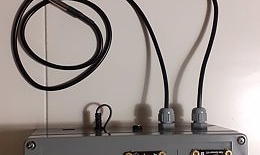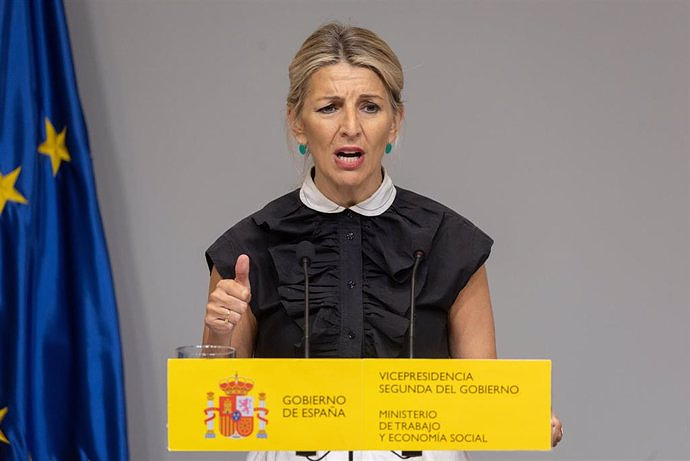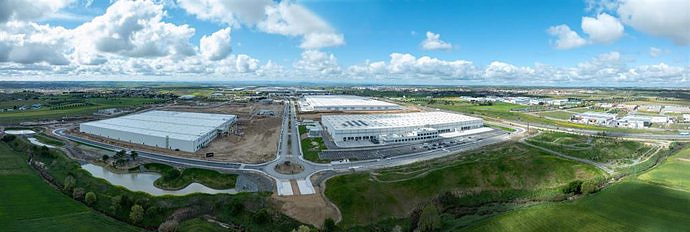MADRID, 16 Ago. (EUROPA PRESS) -
The World Council of the International Automobile Federation (FIA) has approved this Tuesday the new technical, sporting and financial regulations for Formula 1 engines from the year 2026, confirming its commitment to energy and financial sustainability.
These innovations will begin to apply in four years and are the result of "extensive research and development by the FIA, as well as collaborative consultation between the FIA and new manufacturers, current and potential".
The new regulations highlight the FIA's commitment to "innovation and sustainability and come at a time of significant growth for Formula 1". One of the four pillars on which the regulation is based is about "maintaining the show".
The 2026 power unit will have similar performance to current designs, using high-output, high-revving V6 internal combustion engines and avoiding excessive performance differentiation to enable better racing ability.
Another pillar is environmental sustainability: "the Energy Unit in 2026 will include an increase in the deployment of electrical energy by up to 50% and will use a 100% sustainable fuel; together with financial sustainability, where the regulations regarding the units powertrains "will reduce overhead for competitors while retaining the state-of-the-art technological showcase that is at the core of Formula 1".
And finally, the "attractiveness for new manufacturers of power units". A point whose objective is to make "possible and attractive for newcomers to join the sport at a competitive level", which welcomes the possible arrival of other brands to the 'great circus'.
FIA President Mohammed Ben Sulayem indicated after the agreement that the "introduction of advanced technology together with sustainable synthetic fuels aligns" with the objective of "providing benefits for road car users" and fulfills its objective of " net zero carbon by 2030".
On the other hand, the FIA is also making changes to the 2022 and 2023 F1 technical regulations to address the issue of the so-called "porpoise" effect to prevent cars from 'bouncing' on straight tracks, as well as introducing "higher safety standards". for the roll-over ring".
In this way, starting with the Belgian Grand Prix, the FIA will measure the phenomenon and expect teams to operate below a certain threshold for their car to be considered safe. In addition, the following measures are approved for 2022 and 2023: Floor Flexibility: Changes to redefine plank stiffness requirements around thickness gauge holes.
In addition, the ground edges will be raised by 15mm and the diffuser edge stiffness will be increased. An additional sensor will also be ordered to monitor the phenomenon more effectively, the FIA adds in a statement, in its objective to put an end to the 'porpoise'.

 Exploring Cardano: Inner Workings and Advantages of this Cryptocurrency
Exploring Cardano: Inner Workings and Advantages of this Cryptocurrency Seville.- Economy.- Innova.- STSA inaugurates its new painting and sealing hangar in San Pablo, for 18 million
Seville.- Economy.- Innova.- STSA inaugurates its new painting and sealing hangar in San Pablo, for 18 million Innova.- More than 300 volunteers join the Andalucía Compromiso Digital network in one month to facilitate access to ICT
Innova.- More than 300 volunteers join the Andalucía Compromiso Digital network in one month to facilitate access to ICT Innova.-AMP.- Ayesa acquires 51% of Sadiel, which will create new technological engineering products and expand markets
Innova.-AMP.- Ayesa acquires 51% of Sadiel, which will create new technological engineering products and expand markets Dortmund storms Paris and reaches the final
Dortmund storms Paris and reaches the final Cos bids farewell to Congress warning that the lack of political consensus "affects economic prospects"
Cos bids farewell to Congress warning that the lack of political consensus "affects economic prospects" Two workers died and one injured when two floors collapsed in a building under construction in Fuencarral
Two workers died and one injured when two floors collapsed in a building under construction in Fuencarral The Government will wait until after the European elections to propose measures on democratic regeneration
The Government will wait until after the European elections to propose measures on democratic regeneration How Blockchain in being used to shape the future
How Blockchain in being used to shape the future Not just BTC and ETH: Here Are Some More Interesting Coins Worth Focusing on
Not just BTC and ETH: Here Are Some More Interesting Coins Worth Focusing on They develop devices for the precise diagnosis of cancer patients
They develop devices for the precise diagnosis of cancer patients UMH researchers are working on a high-quality apricot crop that requires less irrigation water
UMH researchers are working on a high-quality apricot crop that requires less irrigation water The UPV develops an application to improve the quality of life of patients with glioblastoma
The UPV develops an application to improve the quality of life of patients with glioblastoma A sensor system obtains the fingerprint of essential oils and detects if they have been adulterated
A sensor system obtains the fingerprint of essential oils and detects if they have been adulterated A million people demonstrate in France against Macron's pension reform
A million people demonstrate in France against Macron's pension reform Russia launches several missiles against "critical infrastructure" in the city of Zaporizhia
Russia launches several missiles against "critical infrastructure" in the city of Zaporizhia A "procession" remembers the dead of the Calabria shipwreck as bodies continue to wash up on the shore
A "procession" remembers the dead of the Calabria shipwreck as bodies continue to wash up on the shore Prison sentences handed down for three prominent Hong Kong pro-democracy activists
Prison sentences handed down for three prominent Hong Kong pro-democracy activists ETH continues to leave trading platforms, Ethereum balance on exchanges lowest in 3 years
ETH continues to leave trading platforms, Ethereum balance on exchanges lowest in 3 years Investors invest $450 million in Consensys, Ethereum incubator now valued at $7 billion
Investors invest $450 million in Consensys, Ethereum incubator now valued at $7 billion Alchemy Integrates Ethereum L2 Product Starknet to Enhance Web3 Scalability at a Price 100x Lower Than L1 Fees
Alchemy Integrates Ethereum L2 Product Starknet to Enhance Web3 Scalability at a Price 100x Lower Than L1 Fees Mining Report: Bitcoin's Electricity Consumption Declines by 25% in Q1 2022
Mining Report: Bitcoin's Electricity Consumption Declines by 25% in Q1 2022 Oil-to-Bitcoin Mining Firm Crusoe Energy Systems Raised $505 Million
Oil-to-Bitcoin Mining Firm Crusoe Energy Systems Raised $505 Million Microbt reveals the latest Bitcoin mining rigs -- Machines produce up to 126 TH/s with custom 5nm chip design
Microbt reveals the latest Bitcoin mining rigs -- Machines produce up to 126 TH/s with custom 5nm chip design Bitcoin's Mining Difficulty Hits a Lifetime High, With More Than 90% of BTC Supply Issued
Bitcoin's Mining Difficulty Hits a Lifetime High, With More Than 90% of BTC Supply Issued The Biggest Movers are Near, EOS, and RUNE during Friday's Selloff
The Biggest Movers are Near, EOS, and RUNE during Friday's Selloff Global Markets Spooked by a Hawkish Fed and Covid, Stocks and Crypto Gain After Musk Buys Twitter
Global Markets Spooked by a Hawkish Fed and Covid, Stocks and Crypto Gain After Musk Buys Twitter Bitso to offset carbon emissions from the Trading Platform's ERC20, ETH, and BTC Transactions
Bitso to offset carbon emissions from the Trading Platform's ERC20, ETH, and BTC Transactions Draftkings Announces 2022 College Hoops NFT Selection for March Madness
Draftkings Announces 2022 College Hoops NFT Selection for March Madness




























